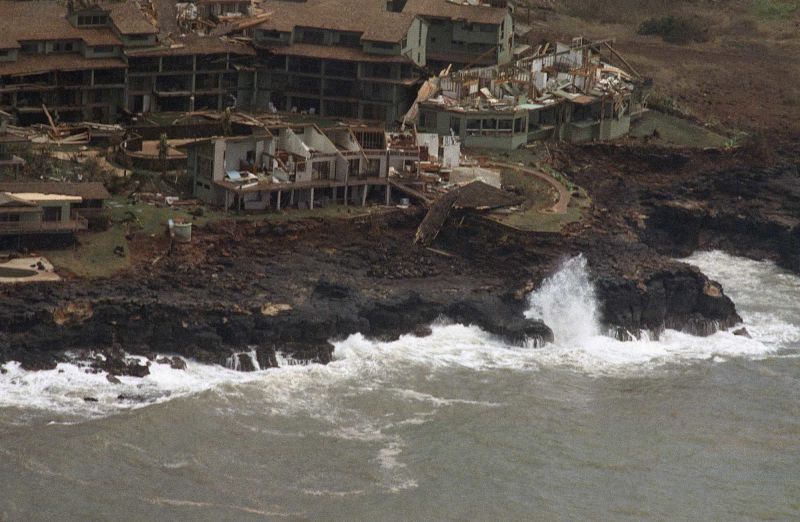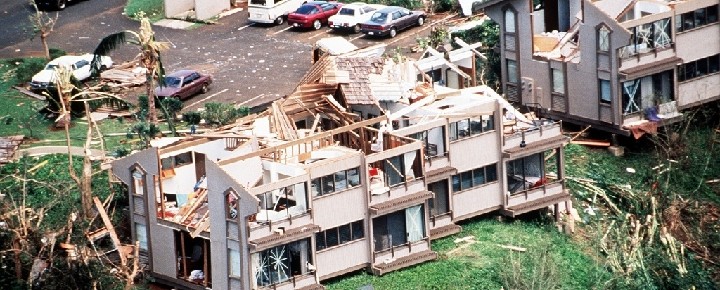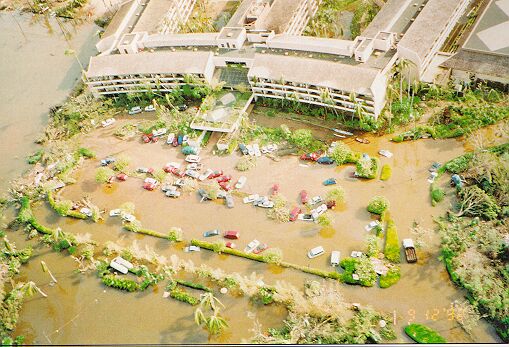
In fact, hurricanes and tropical storms accounted for the major share of all property insurance losses during the period from 1986 to 1992.

The size of the losses from Andrew proved that the damage that a single hurricane could do had been seriously underestimated. The property insurance industry that, as recently as 1986, had presumed that two $7 billion hurricanes would be the most catastrophic loss that the industry could expect in a given year, was shaken by the $15.5 billion loss from Hurricane Andrew (AIRAC, 1986). East or Gulf coasts since Hurricane Camille struck Louisiana in 1969. Hugo and Andrew were the strongest hurricanes to strike the U.S. However, Hurricanes Hugo (1989) and Andrew (1992) redefined the way the public and government regard the risk of hurricane damage to homes. The hurricane risk during those twenty years may not have seemed sufficient to warrant the increased investment. When homes were damaged by hurricanes, they were usually repaired to their pre-storm condition, but not often upgraded to reduce or mitigate damage from the next storm. Consequently, both homeowners and government agencies regarded the risk of widespread hurricane damage as manageable within the scope of private home insurance and, sometimes, federally subsidized flood insurance. Hurricanes were seen as infrequent events, and the storms that did occur were low in intensity. Florida, the state most at risk from hurricane damage, had not seen a major hurricane since Betsy in 1965. Likewise, many people living in coastal areas during the period grew up never experiencing the effects of an intense hurricane. East and Gulf coasts were built during the 1970s and 1980s, a period of relatively inactive hurricane formation, and these homes were never exposed to a hurricane. Note: Because this treatise deals with residential hurricane damage, a guide to the construction terms used is supplied at the end of the paper.įor many years, the risk of significant property loss due to hurricanes seemed small. The current state-of-the-art building technology is sufficient to reduce damage from hurricanes when properly applied, and this paper discusses those building techniques that can mitigate hurricane damage and recommends measures for mitigating future hurricane damage to homes. Damage to residential structures from three recent intense hurricanes - Hugo, Andrew, and Iniki - shows that wind is responsible for greater property loss than water. This paper describes potential hurricane hazards from wind and water. Property damage and loss from hurricanes have increased with population growth in coastal areas, and climatic factors point to more frequent and intense hurricanes in the future. Figure 11 - Percent of damaged homes surveyed with damage to roofs greater than one-third.Figure 10 - Percent of damaged homes surveyed with damage levels greater than one-third.Figure 9 - Physical characteristics of Hurricanes Hugo, Andrew, and Iniki.Figure 8 - Velocity pressure as a function of wind speed.Figure 7 - The Saffir-Simpson Damage Potential Scale.Figure 6 - Number of hurricanes making U.S.Figure 5 - Intense Atlantic and Gulf Hurricanes, 1950-1995.Figure 4 - Value of insured coastal property by state - billions of dollars.Figure 3 - Percentage increase in the value of insured coastal property exposures by state, 1980-1993.Figure 2 - Coastal population change, 1980-1993.Figure 1 - Percentage dollar loss by type, 1986-1992.


Hurricane Damage to Residential Structures: Risk and Mitigation Jon K. Natural Hazards Research Working Paper #94

Mary Fran Myers Gender and Disaster Award.


 0 kommentar(er)
0 kommentar(er)
